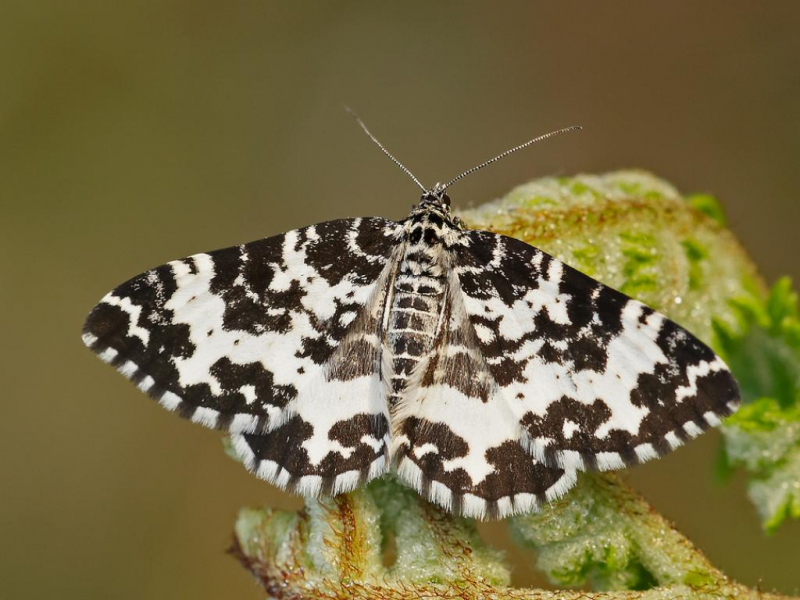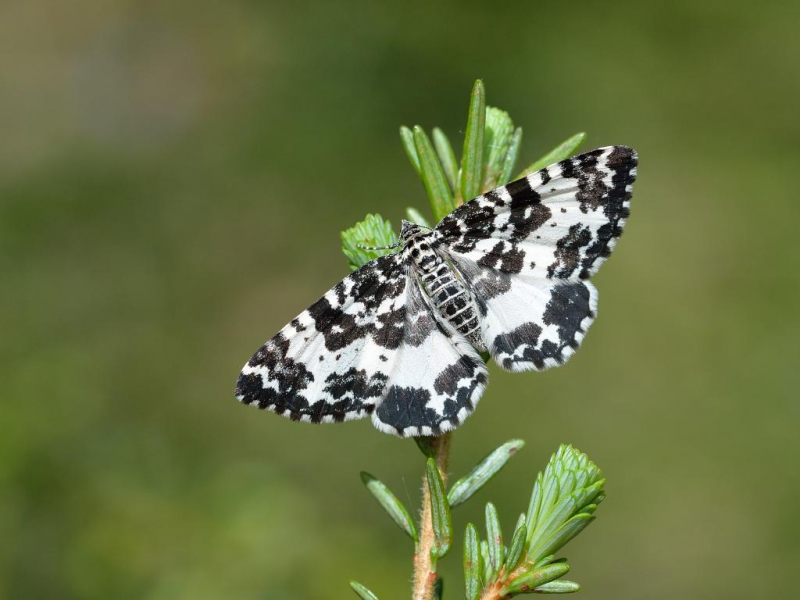Argent and Sable

The Argent and Sable moth (Rheumaptera hastata) is a day-flying moth of the family Geometridae, with distinctive black and white colors. hey typically inhabit hillsides and wetlands. To create their cocoons, the larvae spin together the leaves of the plants they eat, like birch and bog myrtle. It was christened argent and sable in 1778. Argent and sable refer to the heraldic color names for white and black. Their distribution is Holarctic. The species was first described by Carl Linnaeus in his 1758 10th edition of Systema Naturae.
The wings have a black ground color with variable white pattern elements. A wider inner cross and a narrow basal cross line are typical. White splotches, which may be continuous, run through the black midfield. A broad white band is created by the outer cross line and typically contains a row of black dots. In the black area of the margin is a wavy line broken into white stains, which forms an arrow- or spearhead-shaped element (R. hastata is Latin for spear-shaped). The fringes are stitched in black and white. The hindwing's design resembles that of the forewing. On a few black stains in some shapes, the black tone is diminished.











